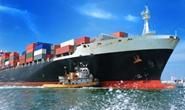Shipping and Logistics

Logistics Round-Up End of January 2017
Written by Sandy Williams
January 23, 2017
As January comes to a close there have been plenty of changes in the U.S. with the new administration taking office and a flurry of cabinet nominations and trade decisions that could affect shipping in the U.S. and globally.
Wilbur Ross is slated by the new president to lead the Department of Commerce, Robert Lighthizer to be U.S. Trade Representative, and Elaine Chao, a former maritime official, to run the Department of Transportation. Former Exxon CEO Rex Tillerson was narrowly confirmed as Secretary of State. President Trump has withdrawn the United States from the controversial Trans Pacific Partnership and has reiterated his plans to put 35 percent tariffs on products from any U.S. company that moves production to Mexico or Canada and then exports back to the U.S. He also vowed in a meeting of top manufacturing executives to cut regulations by as much as 75 percent and to renegotiate or scrap NAFTA.
Seaborne Freight
The bulk freight market is showing signs of improvement as 2017 gets underway but because of the Chinese New Year holidays, starting on January 28, the Chinese segment of the dry cargo market will be essentially closed for a month. MID-SHIP expects pent-up demand to surface following the conclusion of the holiday period.
The Panama Canal is experiencing delays of 3 to 4 days for southbound vessels and 5 days for northbound vessels due to unscheduled lock maintenance and an increase in vessel arrivals.
Seaborne shipping rates are softer across the four major shipping markets due to the shipping slowdown in China. The Baltic Dry Index was at 914.00 as of January 23, 2017 and has been on a downward trend since January 18 when it was at 952.00. The BDI tracks dry-bulk rates based on vessel size and shipping route and is a used as a benchmark for overall trade volume.
Rivers
Fog continues to be a problem in the lower Mississippi for barges at cargo berths. Last week delays of up to 48 hours were experienced by boats waiting to transit through the Industrial Locks. The Upper Mississippi is closed for winter maintenance and is scheduled to reopen at the end of February depending on ice conditions. Ice on the Illinois is melting due to warmer weather, causing problems for navigation due to high water. The Ohio River is also dealing with high water due to recent heavy rains. In general, traffic is slow on the nation’s rivers right now.
MID-SHIP reports that 973 new barges were delivered in 2016 with Ingram leading barge operators by taking delivery of 310 jumbo hopper barges, of which 275 were covered. When the number of barges that scrapped in 2016 is compared to new deliveries, there is a net increase of 623 barges, says MID-SHIP.
Trucking
DAT Trendlines reported that during the week of Jan. 8 – 14 load board activity increased but load-to-truck ratios declined. Rates were also down for all truck types. The flatbed load to truck ratio was 27.1 loads per truck during the period. The national average flatbed rate fell 3 cents to $1.89 per mile. Spot prices ranged between $2.52 per mile in the Northeast to $1.77 per mile in the Phoenix area.
DAT Trendlines reports there are five threats to capacity in 2017: increased demand, ELD mandate, increased scrutiny of drivers, rising fuel prices and infrastructure concerns.
Spot market demand started out weak in 2016 but increased for six straight months in the second half of the year. Demand for flatbeds, which are used to transport steel among other products, increased 48 percent.
All heavy duty trucks by December 17 must use electric logging devices to log hours of service for drivers. Industry analysts predict because not all carriers will be prepared, capacity could be reduced somewhere between 3-5 percent and 6-10 percent.
In an industry that is already struggling with finding and retaining truck drivers, regulations are expected to become more stringent for testing sleep apnea and drug and alcohol abuse and results will be entered into a database of drivers. The FSMCA is also considering speed reductions for trucks which would decrease productivity.
Diesel prices are up 59 centers per gallon since February and are expected to continue to grow throughout 2017. Carriers are concerned that higher fuel prices could result in bankruptcies for financially strapped operators as it did in 2008.
Infrastructure problems include highway congestion and lack of sufficient parking for truck drivers to take breaks. A problem that will be exacerbated as the hours of service regulations come into play.
The American Trucking Association reported the seasonally adjusted For-Hire Truck Tonnage Index fell 6.2 percent in December following an 8.4 percent increase in November.
“The ups and downs that plagued most of 2016 continued in December,” said ATA Chief Economist Bob Costello. “I don’t recall a year in recent memory with so many large swings on a month-to-month basis. Looking ahead, there are some positive signs for truck tonnage. This includes the continued spending by consumers, larger wage gains, and solid home construction. Factory output will continue to be soft, but it should be better this year than last year. And most importantly, the supply chain continues to make progress reducing bloated inventories, which will help truck volumes going forward.”
Rail
Cumulative rail traffic for the first two weeks of 2017 was down 1.6 percent year-over-year. During the week ending January 14, the Association of American Railroads reports carloads were up 4.4 percent to 253,223 carloads compared with the same week in 2016. Intermodal volume was 263,006 containers and trailers, down 0.3 percent.
The AAR is concerned about market shifts in the US economy that have challenged the freight rail industry as well as a series of proposed regulations before the Surface Transportation Board (STB).
“We remain focused on providing the best possible rail network for our customers and all Americans,” said Edward R. Hamberger, President and CEO of the Association of American Railroads, “and as a result, the freight rail industry will advocate for a simpler and fairer tax code to enhance U.S economic development, promote growth and reduce debt. Freight railroads will also push for a sustainable funding source that provides for aggressive investment in public infrastructure.”
“The freight rail industry is capital intensive and must spend massive amounts of its money to maintain infrastructure and equipment. Current STB proposals would inhibit railroads’ ability to continually invest the amount of capital needed to make the 140,000-mile network work for Americans. The Board should be cognizant of the economic impact our industry and promote regulations that enhance job growth and development,” Hamberger added.
Great Lakes
The shipping season is officially closed on the Great Lakes. Ice coverage is on the Lakes as of January 24 is 6 percent, compared to 15.3 percent on the same day last year and 27.4 percent in 2015.

Sandy Williams
Read more from Sandy WilliamsLatest in Shipping and Logistics

Wittbecker on Aluminum: US-China trade war clobbers cross-Pacific trade
Container shipping lines have sharply increased blank sailings on Transpacific routes in response to escalating trade tensions between the US and China.

Volvo plans to lay off up to 800 workers at US truck plants
The company cited uncertainty about freight rates and demand, regulatory changes and the impact of tariffs.

Trump signs executive order aimed at making US shipbuilding ‘great again’
President Trump on Wednesday signed an executive order meant to breathe new life into American shipbuilding and curb Chinese dominance in the sector.

Great Lakes iron ore trade fell again in March
Recall that shipments also saw a sharp decline in January.

Longshoremen ratify contract with maritime alliance
Nearly 99% of ILA members voted in favor of a new labor deal with the United States Maritime Alliance that covers workers at ports on the Atlantic and Gulf coasts.
